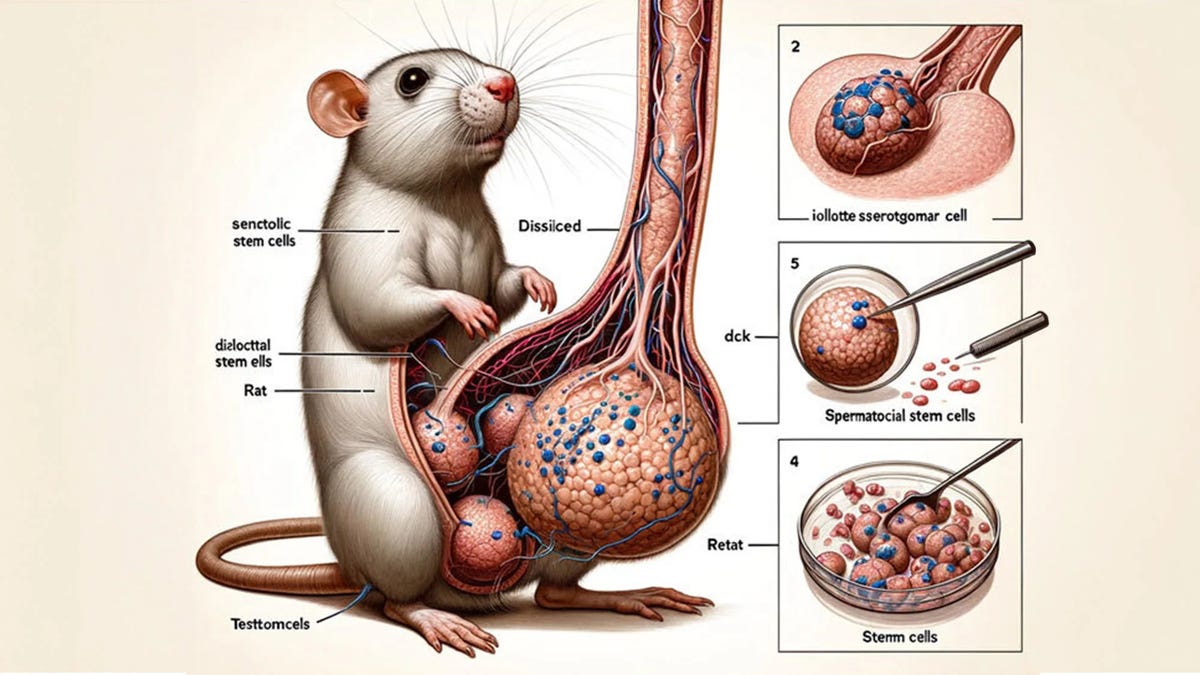
Don’t worry—the rat dck can no longer hurt you. The open-access paper that contained bizarre, AI-generated imagery of rat genitalia and gibberish graphics has been retracted by its publisher, which said that the study authors violated the journal’s guidelines.
Published in Frontiers in Cell and Developmental Biology, the study’s text discussed the function of stem cells associated with rat testes. But the subject matter is not what captured attention. The study authors included several images that were fantastically and grotesquely incorrect. The authors disclosed in the paper’s text that the images were made by Midjourney, one of the most popular AI image generators. The article was retracted on February 16, three days after it was published.
Advertisement
The study “included substandard figures and annotations generated by an AI-program, including ‘the rat,’” a Frontiers spokesperson told Gizmodo in an email. “Despite processes in place to ensure compliance, the continued use of AI-generated images that contravene our clear guidelines went unnoticed, and the paper was published.”
Advertisement
As noted by Gizmodo at the time, Frontiers’ editor guidelines subject manuscripts to “initial quality checks” by the journal’s research integrity team and its handling editor, even before peer-review. Yet the problematic illustrations made it to print. One of the paper’s reviewers told Vice that the imagery was not their responsibility. To date, the paper has been downloaded over 24,000 times and been viewed 358,673 times. The work certainly accrued more attention than it would have with scientifically accurate illustrations, AI-generated or otherwise.
Advertisement
The rat genitals are clearly anatomically incorrect, even if you’ve never investigated a rodent’s nether regions. In the Midjourney image, the animal’s apparent phallus curves up beyond the image’s border—perhaps the reader is to assume that it extends forever. The rat (the only entity labelled correctly by the AI) has at least three apparent testicles, and the diagrams of the signaling pathway looked more like a board game than a helpful chart.
Most of the words in the images were spelled incorrectly, made up, or written with characters that are not quite letters. AI image generators often struggle with producing text—you only have to look as far as last week’s fake “vintage” image of a diner at a McDonald’s to see a human example. Even AI text generators can produce uncanny material, as recently evidenced by the entire script of a Willy Wonka-inspired event-turned-fiasco in Glasgow, Scotland.
Advertisement
“The attention sparked by ‘the rat’ has been driven by the wider concern around the growing role of artificial intelligence in scientific publishing, and in all other aspects of society,” the Frontiers spokesperson wrote. “All evidence points to researchers continuing to adopt and use AI in their work and we need to collectively give them the tools and support to make sure this is a positive innovation, enhancing research output and publishing.”
But that is to say: AI’s presence in scientific publishing isn’t going anywhere. So whether “retat” stem cells or medical research, journal editors—and of course, the publishers—need to be wary of letting errors slip through the cracks. It shouldn’t be the public’s job to call attention to slipshod science; once such work is published, the damage to science’s credibility is already done.
Advertisement
More: That Viral Photo of a Man Smoking in McDonald’s Was Made With AI
Services Marketplace – Listings, Bookings & Reviews